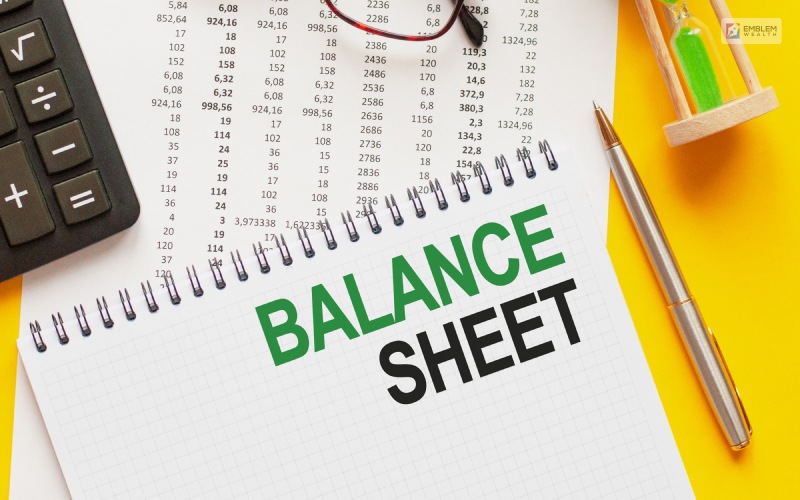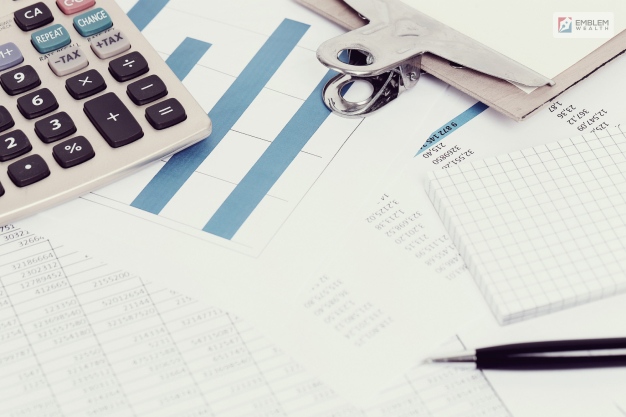Exploring The Different Components Of A Balance Sheet

The term balance sheet is a very crucial and popular term in the financial language.
You can be from a financial background or just completely, too; thus, the earlier you get accustomed to a balance sheet, the better it is for your benefit.
So, what exactly is a balance sheet, you ask? Well, to explain it in a single line, it is one of the most important components in a financial statement of a company.
A balance sheet is the financial report of any business that reflects the assets, liabilities, and shareholder equities that the business possesses at a given time period.
A balance sheet is extremely crucial as it provides the foundation for calculating the return rates for investors and assessing the company’s capital structure.
In simple terms, it is an oversight of the owns and owes of a company, along with the investments made by shareholders.
Balance sheets can be used in combination with other financial statements for conducting a fundamental analysis or calculating financial ratios.
Key Points To Remember
- A balance sheet is a financial statement that outlines the assets, liabilities, and shareholders’ equity in a business.
- A balance sheet is among the three elemental financial statements that contribute to the evaluation of a business.
- It is an overview of a company’s finances as of its publication date.
- A balance sheet follows an equation that compares the assets with the sum of liabilities and shareholders’ equity.
- A balance sheet is used by fundamental analysts to compute financial ratios.
Importance Of A Balance Sheet

The importance of a balance sheet in any business exceeds the other financial statements for many reasons.
You can either study a balance sheet on its own or simultaneously with other financial statements like the cash flow statement or the income statement to get the overall picture of the business’s financial health.
If you are new to it, it may all be very overwhelming for you. Therefore, we will just stick to the four major financial metrics that a balance sheet incorporates.
Liquidity
A balance sheet provides a field of comparison for the current assets to the current liabilities in a business. You must always remember that current assets must always be more than the current liabilities in a balance sheet. This way, a company can cover its short-term obligations.
Leverage
Looking at a company’s finances, you can calculate the leverage that the company has, which helps in determining the financial risk that the company is prepared to take.
Comparison of debt to equity and debt to total capital are the most common ways to evaluate leverage through a balance sheet.
Efficiency
By evaluating a balance sheet in connection with an income statement, it is possible to assess the efficiency with which a company puts its assets to use. For example, when the revenue is divided by average total assets, the Asset Turnover Ratio is generated to measure how efficiently the company is turning over its assets into revenue.
In addition to it, the working capital cycle conveys how well a business manages its cash in the short run.
Rates Of Return
You can use a balance to calculate how well a business is generating returns. For example, you can divide the net income of the shareholder’s equity to get the Return on Equity (ROE).
You may also divide the net income by the total assets to generate a Return on Assets (ROA).
Finally, you can divide the net income by the debt + equity, which will fetch you the Return on Invested capital (ROIC).
Components Of A Balance Sheet

There are primarily five components in a balance sheet. Every item in a balance sheet is further listed under the five categories.
Let us now get in depth about what each of these components are and what importance they hold in the financial statement.
Current Assets
These are the items that are listed under the current assets.
Cash And Cash Equivalents
Cash has the highest liquidity among all assets and therefore is listed on the first line of the balance sheet. Cash equivalents, including assets that have a maturity period of under three months or the ones that can be liquidated on short notice, like marketable securities, are also combined in this category.
A company is supposed to mention the equivalents in its possession in the bottom of the balance sheet.
Accounts Receivable
The account is supposed to list the balances of all the sales revenue that is still left on credit and the net balance of allowance for doubtful accounts(which creates a bad debt expense).
The value of this account decreases as companies gradually recover accounts receivable, simultaneously increasing cash.
Inventory
Inventory includes all the finished goods, work-in-progress goods, and the amounts for raw materials.
The business puts this account to use as the income statement or cost of goods sold while reporting sales of goods.
Non-Current Assets
The following are the accounts included under the non-current assets:
Property, Plant, And Equipment (PP&E)
Plant, Property, and Equipment capture all the tangible fixed assets in a company. The line item is the net value of the accumulated depreciation.
Some businesses will categorize their PP&E by different assets like buildings, land, etc.,
All PP&Es are depreciable, whereas land is not.
Intangible Assets
This includes all the fixed assets in a company that might be identifiable and intangible.
Patents, secret formulas, and licenses are included under identifiable intangible assets; however, unidentifiable intangible assets consist of goodwill and brand.
Current Liabilities
Here goes the list of current liabilities:
Accounts Payable
This is the amount that the business owes to its suppliers for the items that it purchased on credit. The amount in accounts payable simultaneously decreases with the amount in Cash
Accounts as the company pays off its debts.
Current Debts / Notes Payable
All the non-AP obligations that are due in a year’s time or in one operating cycle for the business are included under current debt.
However, notes payable may have a long-term version, including notes which have a maturity of more than a year.
Current Portion Of Long Term Debts
This account may not be combined with Current Debt. They may look similar; however, the current portion of a long-term debt is particularly the portion that is due in this year of a piece of debt whose maturity is more than just one year.
Non-Current Liabilities
These are the noncurrent liabilities that you may want to look for in a balance sheet.
Bonds Payable
This account holds the amortized amount of the bonds that the business has issued.
Long Term Debts
This account amounts to all the long-term debts of the company excluding the current portion if that is at all included in the current liabilities.
Shareholder’s Equity
The shareholder’s equity consists of the following accounts:
Share Capital
This account holds the amount that the shareholders have invested in the business. This cash is invested by the investors at the initial formation of the company.
Retained Earnings
This is the overall amount of net income that the company decides to keep for itself. A company pays out dividends from its net income each year.
Balance Sheet Formula

Did you think you have to do an assets minus liabilities formula to evaluate a balance sheet?
Well, you are a little incorrect there.
While evaluating a balance sheet, you must adhere to the formula mentioned below.
ASSETS= LIABILITIES + SHAREHOLDER’S EQUITY
This formula is instinctive. The reason is- the business has to pay for all the assets it owns either by borrowing money or taking it from investors.
Example Of A Balance Sheet

Wrapping Up
This was all that you needed to know about the components of a balance sheet.
I am hoping this will help you with your future references, and if there is anything else that I can help you with, feel free to drop in a comment, and I will be happy to help.
Continue Reading:

























Leave A Reply